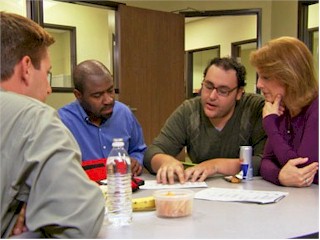
Adults learn differently than children. Many times adults have been out of school for a long time and they no longer have the patience for typical classroom techniques. They learn in a more practical, hands-on, realistic manner. Here are four useful tips for teaching adults.
Adults don’t learn until they feel they need to learn. If they don’t feel the material is relevant to what they need on the job, they will not pay attention and thus not learn. As a trainer you need to give them practical reasons to learn. Give them real world examples about how they will improve in their job performance.
Adults learn differently than children. Adults have often been out of school for a long time, and they no longer have the patience for typical classroom techniques. They learn in a more practical, hands-on, realistic manner. Here are four valuable tips for teaching adults.
Adults don’t learn until they feel they need to. If they don’t feel the material is relevant to what they need on the job, they will not pay attention and thus not learn. As a trainer, you need to give them practical reasons to learn. Give them real-world examples about how they will improve their job performance.
Adults learn better when you switch up training methods—discussions, role plays, and case studies are particularly effective. Find varied ways to make the training realistic and hands-on. Adults thrive on practical application, so make sure the training is tailored so they can take it directly back to the job and use it. Give them realistic problems to solve. Find on-the-job issues that are similar to the situations they will face.
Adults learn better in an informal environment. The training room should not have classroom-style seating. Participants should be encouraged to wear clothing they feel comfortable in. To make the environment even more casual, make sure you encourage interaction and discussion.
Adults learn better with follow-up. If possible, schedule a follow-up session and use questionnaires, surveys, and periodic skill testing to determine what should be covered in follow-up sessions. Learning is rarely a one-time thing. It takes a variety of repeated learning methods to absorb the material thoroughly.
Follow these simple procedures to ensure that adult trainees in your organization have the best chance to learn during training. They will also give them the best chance to use the material productively on the job.